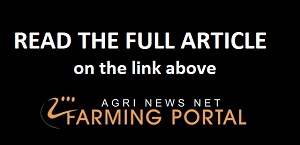Since our previous inflation brief in November 2021, the identification of the Omicron variant, combined with excessive rainfall in the summer rainfall areas, has presented the possibility of further supply disruptions that could affect global and local inflation.
International meat and other food prices lost some momentum in early December, but firming demand drove stronger prices towards the end of the month. Locally, market analysts seem to agree that the high rainfall in December, in both the Eastern and Western parts of the summer crop production areas, is likely to result in a smaller grain and oilseed harvest compared to the past two seasons, but that stocks from previous bumper crops are likely to prevent considerable local price increases. Food inflation figures for December 2021 came in at 5.9%, whilst food and non-acholic beverages were slightly more moderate at 5.5%. This follows a steady increase from 5.4% in January 2021 to a peak of 6.9% in August 2021. The main contributors to the persistent food inflation remains oils and fats (20.8%), meat (8.6%) and dairy and eggs (5.3%).
UNDERLYING AGRICULTURAL COMMODITY PRICES REMAIN FIRM In the case of meat, ongoing tight supplies combined with strong festive season demand resulted in monthly meat inflation of 1.2%. Although slaughter numbers are not yet available for December, November 2021 numbers were 5.3% lower compared to November 2020, whilst sheep slaughtering was 22.6% lower for the corresponding time a year ago. It is expected that this trend of tight supplies also prevailed in December, with fewer store lambs entering the market due to much improved rain and grazing conditions in sheep production areas. Poultry prices also firmed towards the end of 2021 due to a rapid and significant depreciation in the exchange rate. International factors continue to dominate price dynamics in vegetable oil markets. In 2021 prices of oilseeds surged due to production disruptions and long-term structural changes in the palm oil market, further exacerbated by increased demand for oilseeds as feedstocks for biofuels. These dynamics have persisted in the last months of December but recent developments such 19,9% 9,1% 7,9% 5,5% -1,2% 6,3% -5,0% 0,0% 5,0% 10,0% 15,0% 20,0% 25,0% 30,0% Zambia Kenya Brazil SA China USA EU Year-on-year food inflation rate (%) Avg 2013-2019 2020 2021 (Jan to Nov) Des 2021 In December 2021 food inflation in South Africa was lower than reported for Zambia, Kenya, Brazil and the USA. as flooding in Malaysia, the world's second-largest palm producer, and dry conditions in South America, have fuelled new upward momentum in vegetable oil markets.
SHARP INCREASES IN UNDERLYING COST STRUCTURES ALSO DRIVING FOOD INFLATION Further to the movements observed in underlying agricultural commodity prices, costs in the value chain have also added to food inflation. Figure 2 presents a few examples where the average price of the underlying commodity is compared to final retail products. The share of commodities in the price of final retail products ranges from as low as 20% to 67%, indicating that additional cost factors in the value chain, such as logistics, processing and value addition, also make a significant contribution to food inflation. The pandemic has also added to these costs, while prices of factors such as fuel and electricity, to name but a few, have increased greatly over the course of 2021. In December 2021, the year-on-year inflation for administered prices was 15.6%, with inflation on electricity measured at 14% and fuel at 40.5%.














